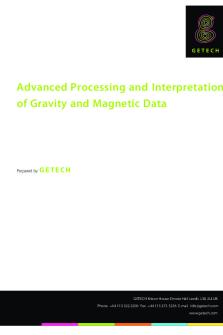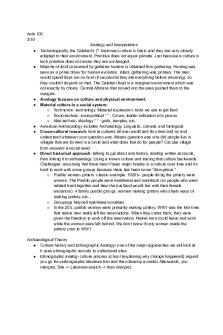Bode Plots and Interpretation PDF

| Title | Bode Plots and Interpretation |
|---|---|
| Course | Control of Systems |
| Institution | University of Pennsylvania |
| Pages | 2 |
| File Size | 136.6 KB |
| File Type | |
| Total Downloads | 70 |
| Total Views | 165 |
Summary
Building bode plots for magnitude and phase, reading them to estimate transfer functions
Converting to dB and deriving long and short-term behavior of the system with frequency...
Description
ESE 505 HW#05 Problem 1 (a) We expect to see an increase in magnitude when 𝜔 = 𝜔𝑛 (natural frequency). This magnitude peak occurs for 𝜔 = 4 𝑟𝑝𝑠. Hence, 𝜔𝑛 = 4 𝑟𝑝𝑠. We also know that for 𝜔 ≪ 𝜔𝑛 , 𝐺 ≈ 𝐴. Hence, observing the 𝐴 magnitude bode plot at low frequencies, we see it flatlining at 𝐴 = 0.5𝑑𝐵. We also notice that 𝑅 = for 2ζ
𝜔 = 𝜔𝑛 . From the graph we see a value of about 2.1dB. Hence, 𝜁 = function should look like 𝐺 =
0.5∗16 (𝑠2 +2∗0.12∗4∗𝑠+16)
=
8 𝑠2 +0.96𝑠+16
0.5 2∗2.1
= 0.12. Therefore, our transfer
.
Using num = [8], den = [1 0.96 16], and wdata = [0.2, 0.5, 2, 4, 8], and a time delay of 0, I obtained the following Bode plots.
1
1
= 10 2 − 10−2 ⇒ 𝜏 = 0.317. Hence, a good 𝜏 approximation for the transfer function would be num = [60] and den = [0.32, 1] with an input delay of (b) Based on OH and piazza, I obtained the expression
27s s.t. 𝐺 =
Problem 2
60𝑒 −27𝑠 0.32𝑠+1
. Using these and wdata = [2,4,6,8,10], I get the following bode plots:
The first few values of magnitude are 𝑅 = 6𝑑𝐵. The given transfer function looks like first order as it does 𝐴 not show a resonance peak at a natural frequency. Hence, 𝐺 = 𝜏𝑠+1. We know as 𝜔 → 0, 𝐺 → 𝐴 = 𝑅. Hence, 𝐴 = 6𝑑𝐵, implying A = 2. As 𝜔 ≫ 0, 𝐺 ≈ −53.7𝑑𝐵. Hence, R = 484.17. This gives us 𝜏 =
𝐴 −𝑗𝜋 𝑒 2, 𝜔𝜏
2 484.17∗314.16
where 𝑅 =
= 1.3 ∗ 10−4 .
𝐴 𝜔𝜏
. At 𝜔 = 314.16 𝑟𝑝𝑠, 𝑅 =...
Similar Free PDFs

Bode Plots and Interpretation
- 2 Pages

6 Bode Plots - Lecture notes 6
- 5 Pages

Bode Rules - notes
- 4 Pages

Ejercicio de Diagrama bode
- 7 Pages
Popular Institutions
- Tinajero National High School - Annex
- Politeknik Caltex Riau
- Yokohama City University
- SGT University
- University of Al-Qadisiyah
- Divine Word College of Vigan
- Techniek College Rotterdam
- Universidade de Santiago
- Universiti Teknologi MARA Cawangan Johor Kampus Pasir Gudang
- Poltekkes Kemenkes Yogyakarta
- Baguio City National High School
- Colegio san marcos
- preparatoria uno
- Centro de Bachillerato Tecnológico Industrial y de Servicios No. 107
- Dalian Maritime University
- Quang Trung Secondary School
- Colegio Tecnológico en Informática
- Corporación Regional de Educación Superior
- Grupo CEDVA
- Dar Al Uloom University
- Centro de Estudios Preuniversitarios de la Universidad Nacional de Ingeniería
- 上智大学
- Aakash International School, Nuna Majara
- San Felipe Neri Catholic School
- Kang Chiao International School - New Taipei City
- Misamis Occidental National High School
- Institución Educativa Escuela Normal Juan Ladrilleros
- Kolehiyo ng Pantukan
- Batanes State College
- Instituto Continental
- Sekolah Menengah Kejuruan Kesehatan Kaltara (Tarakan)
- Colegio de La Inmaculada Concepcion - Cebu











